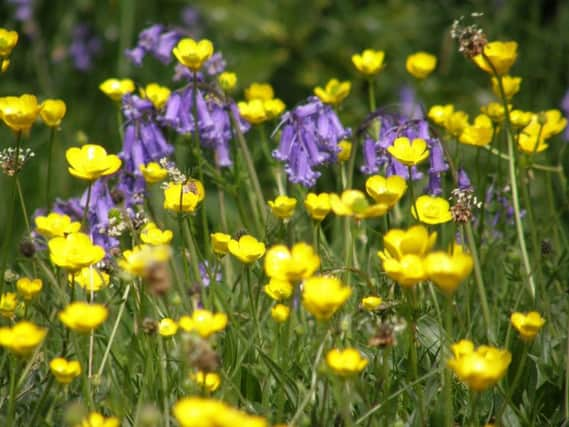COLUMN: Let the garden go wild to help homeless bees


The good news is that your garden can help to replace habitats lost from the countryside. To ensure we can all do our bit for nature, here’s a ‘how to’ guide to inspire you to create your own mini meadow. Whether your space is large or small, you can grow a wild flower meadow almost anywhere. You just need a container pot or a window box. If you have a bit more space to spare mark out one metre squared of lawn.
Wild flower meadows grow best in a sunny location with poor soil - they won’t grow in rich soil with lots of nutrients. If you are not sure what you have, get a simple soil testing kit that you can get from your local garden centre. For lawns, if the pH is too high remove an inch of soil and replace with a low nutrient top soil. If the pH is already low, mow the grass, remove the cuttings and scarify the ground to create bare patches. If you are growing your wild flowers meadow in a pot, just fill it up with a low nutrient top soil and avoid compost.
Advertisement
Hide AdAdvertisement
Hide AdSow your mini meadow in spring or autumn. Make sure you choose native wildflower seed, ideally a perennial seed mix to establish it, with species like oxeye daisy, knapweed and bird’s-foot-trefoil, or spring flowers like red campion and cowslip. If you are not sure visit your local garden centre for help.
For containers or high pH soils, try an annual seed mix containing the cornfield annuals such as poppies, cornflowers, corn cockle and corn marigold that were once common in arable fields, and re-sow each year.
Top tip – Sowing yellow rattle will cut down grass growth so your wild flowers will thrive. When your meadow is at its peak it will attract lots of visitors like butterflies, bees and birds.
In late August you will need to trim the meadow. Remember to remove the cuttings to stop any nutrients getting into the soil. Keep trimming over winter. Make sure you collect seeds from your wild flowers - use them to fill in any bare patches or give them to your neighbours.
If everyone in Derbyshire sowed a mini meadow in a corner of every garden this year, what a difference we could make!